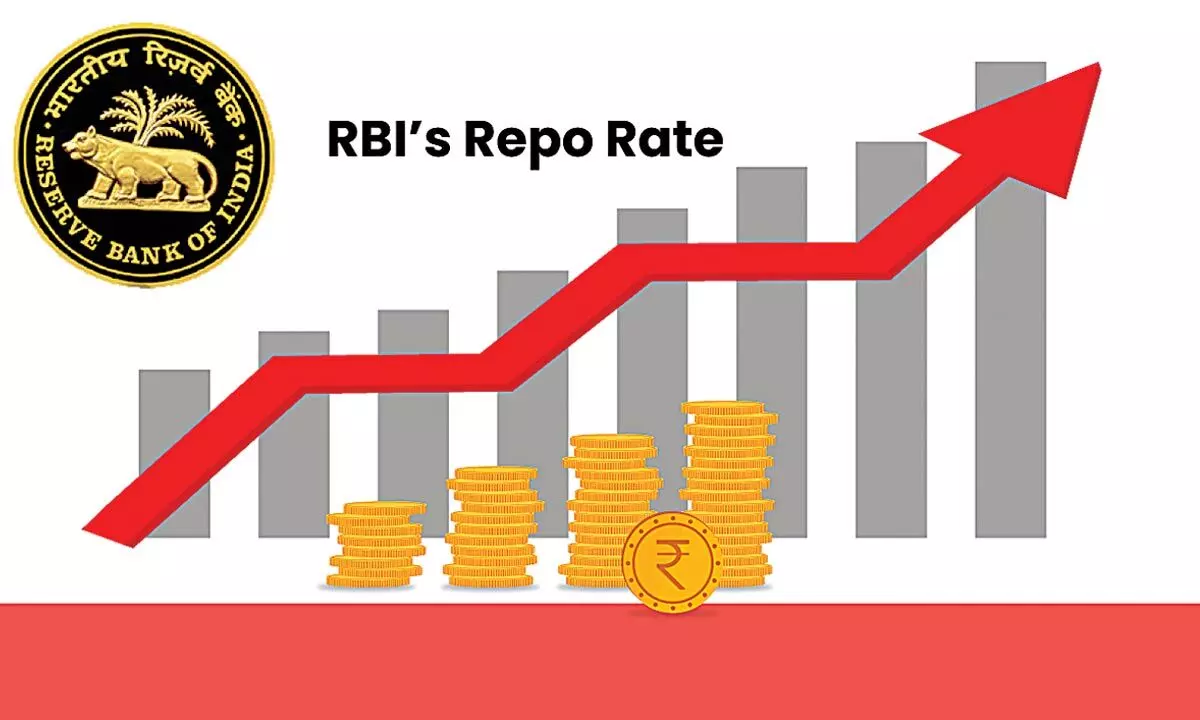Rate hike likely in 35-50 bps range
RBI, after its 3-day MPC meeting, may announce short-term borrowing rate (repo) hike today; 25 bps hike will indicate inflation peaked and will not go up further; If it’s 50 bps then it’ll indicate that inflation peak has not yet been achieved and it can send a different signal to the market
image for illustrative purpose

Taming Inflation
- RBI raised repo twice so far this fiscal
- It raised repo rate by 40 bps in May and 50bps in June
- Existing repo rate is 4.9%
- Pre-Covid level rate was 5.15%
- Hike of 50 bps just to withdraw excess monetary accommodation
Mumbai: Experts are of the view that the Reserve Bank of India may hike key policy rates by up to 50 basis points in the forthcoming annual monetary policy review on Friday. Bizz Buzz interacted with a number of stakeholders to elicit their opinions.
Analysts believe that RBI will hike repo rate by 50 bps to acknowledge elevated, but gradually falling inflation, being in sync with global monetary policy, while reacting to domestic macro situation, addressing external sector pressures by managing interest rate differentials and continuing to frontload the rate hikes.
Arguably, the quantum of hike is finely balanced within the 35-50 bps range.
Upasna Bhardwaj, Chief Economist, Kotak Mahindra Bank, says, "we expect RBI to hike repo rate by 50 bps in the upcoming policy. While some of the early signs of inflation moderation is visible, we believe that the external sector risks remain abound and to offset the increasing pressure on INR, RBI should frontload the rate hikes even as the overall terminal rate may not eventually be very high. We continue to expect 85 bps hike in repo rate to 5.75 per cent
by end 2022."
In fact, other experts also believe that RBI may hike repo rate by 85 bps in the current fiscal. Madan Sabnavis, Chief Economist Bank of Baroda says, "we do expect the RBI to go for a 25 bps hike in repo rate this time. This will bring it to the pre-Covid level of 5.15 per cent. A 25 bps hike will indicate that inflation has peaked and though high will not go up significantly. Any aggressive move of say 50 bps will indicate that inflation peak has not yet been achieved and hence that can send a different signal to the market. We also expect some mention on steps to be taken to stabilize liquidity as surpluses have come down. VRR and OMOs could be the two prongs used by the RBI to induce liquidity in the coming months."
Under the present situation of global prices coming down, we do not expect any change in forecasts of either inflation or GDP, he said.
Arun Malhotra, Founding partner & portfolio manager at CapGrow Capital Advisors, said, "The pressure on commodity prices is easing with lot of metals and other commodities falling by 15-30 per cent. This should ease the inflationary pressure, going forward. The twin objective of the RBI of maintaining price stability and at the same time not hurting growth would be best achieved by raising rates by 25 bps."
Recession fear in the US and in other parts of the world have been somewhat positive for India. Sharp drop in commodity prices and a pickup in monsoon should ease some pressure from the RBI. Pankaj Pathak, Fund Manager-Fixed Income, Quantum AMC, said that RBI may, nonetheless, hike the repo rate by another 50 basis points just to withdraw the excess monetary accommodation provided during the pandemic.
"We expect the RBI's commentary to soften a bit with an acknowledgement that inflation risks are receding," he added. From the bond markets perspective, much of this is already priced in as bond yields have fallen by over 25 basis points from their recent peak. Indian bond yields will likely trade in a tight range in coming months. From the monetary policy, the bond market will look for indication on the total quantum of rate hikes in this cycle.
Suvodeep Rakshit, Senior economist at Kotak Institutional Equities, says, "We continue to pencil in repo rate at 5.75 per cent by end-FY2023. The RBI's deliberations will likely be centered around global monetary policy cycle and outlook for global growth, external sector imbalances manifesting in pressures on the INR, recent easing of global commodity prices, and domestic inflation and growth trajectory."
We note that since the June policy, the Fed has surprised on the upside with 150 bps hikes over the June and July policies with risks of narrowing interest rate differentials. We believe that while domestic inflation concerns may be slightly lower, external sector concerns warrant caution, he added.

